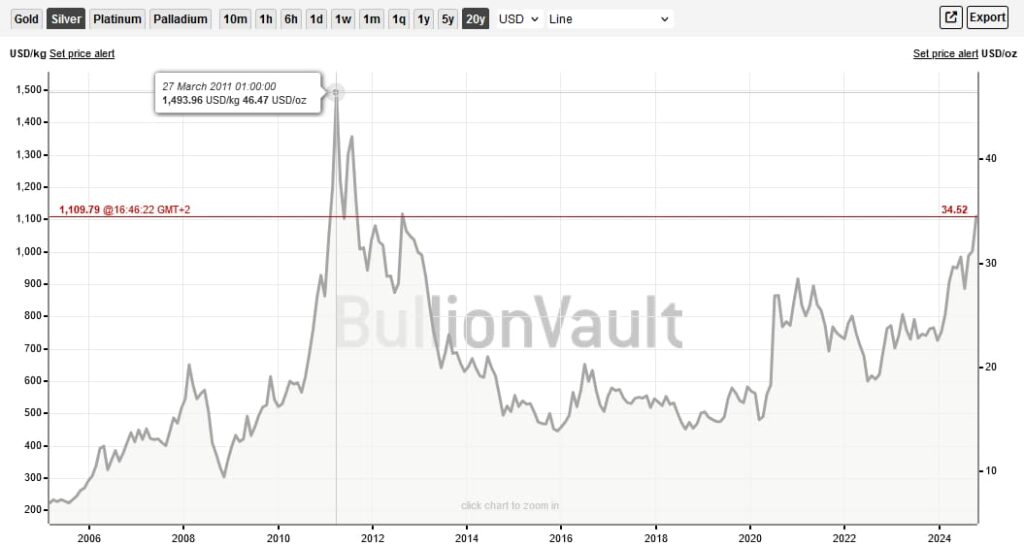Silver is in the midst of a vigorous bull run, having even outperformed gold by some 6% year-to-date (YTD). At press time, the precious metal is trading at $34.45 per ounce — a 12-year high.
However, we’re still quite a ways away from silver’s all-time high (ATH) price of $49.95, which was reached in 1980. To be fair, that was a case of market manipulation — even so, the highest legitimate peak was $46.47 in 2011 — 34.89% higher than the current price.

Amidst this historic rally, investors are left wondering if silver prices still have enough momentum and room to grow. Robert Kiyosaki, the famed author of ‘Rich Dad Poor Dad’ recently urged investors to go long on silver before it’s too late.
Picks for you
Kiyosaki thinks that it’s only a matter of time before prices reach a new all-time high of $50. And he’s not alone — precious metals forecasting platform Gold Predictor as well as veteran trader Bob Loukas have put out similar theses recently.
Macroeconomic conditions favor silver either way
Silver, much like its yellow-hued cousin, is renowned as a hedge against inflation and a store of value. While inflation might be dropping, this is quite unlikely to cut the bull run short.
Here’s why silver is uniquely positioned to benefit, no matter how macroeconomic conditions shift. If markets enter a recession, the shimmering metal’s role as a store of value and a hedge would serve to support high prices. If that doesn’t happen, silver’s outsized returns over the past two years will continue to attract new investors looking to profit.
It’s also easier than ever to invest in silver, even for retail investors. Buying bullion might still be too impractical for many — but the iShares Silver Trust (NYSE: SLV) ETF, up 43.67% year-to-date (YTD), is quite an accessible reflection of silver spot prices.

The demand for silver shows steady growth
Silver’s dual role as an industrial commodity and store of value will most likely prove to be a crucial strength. We’ve already outlined the case for silver as an investment — the case for silver’s industrial uses is no less compelling, particularly as the global green transition picks up pace.
The global demand for silver, buoyed by industrial photovoltaic demand, is set to reach 1.2 billion ounces in 2024 per The Silver Institute — which would be the second highest level on record. Mine output is expected to rise 4 percent — and while total global supply is forecast to grow by 3 percent, the precious metal will still remain in deficit — marking four consecutive years of demand outpacing supply.
Finally, it wouldn’t be fair to pose a question in the title without answering it — so no, it is, in fact, most likely not too late to buy silver.





